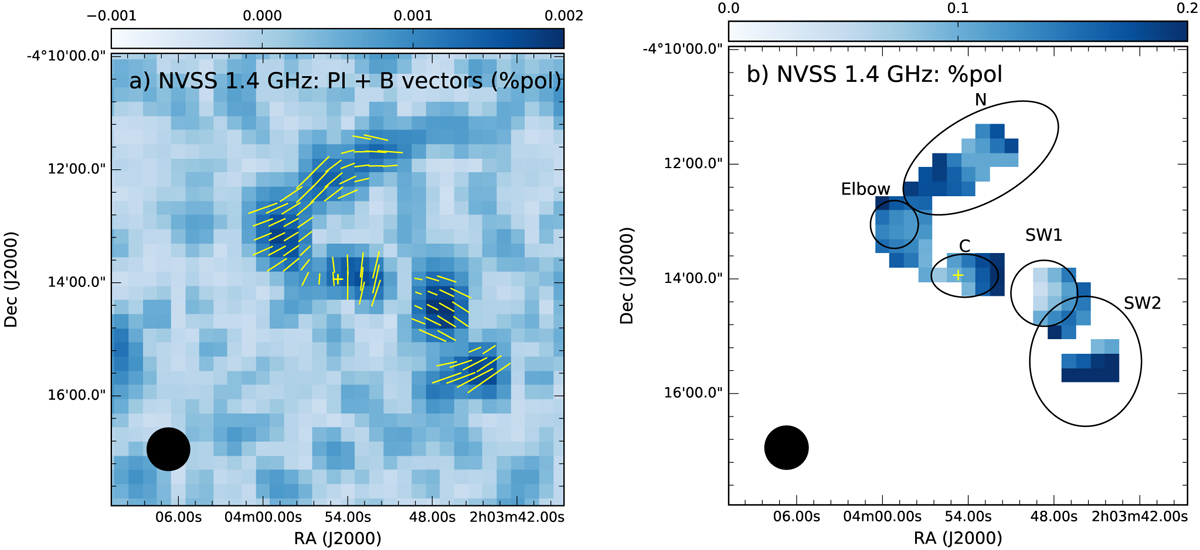Fig. 8

Polarization in the Double Irony at 1.4 GHz (NVSS). a) Polarized intensity image from the NVSS at 1.4 GHz (in Jy beam−1) with vectors indicating the orientation of the electric field of the polarized wave rotated by 90°. The length of the vectors is proportional to the fractional polarization, and 15′′ corresponds to a polarized fraction of 10%. In the calculation of the fractional polarization, a threshold of 4.5 mJy beam−1 (10σ) was used in total intensity and of 0.8 mJy beam−1 (2σ) in polarized intensity. The pixels are not independent: the FWHM of the beam is 45′′ and the pixelsize is 15′′, and vectors are shown for every pixel above the threshold in fractional polarization. b) Image of the fractional polarization. The color scale ranges from 0% to 20%. The ellipses correspond to the regions shown in Fig. 6. The highest fractional polarization is found in the southwestern plume. The western jet is more polarized than the eastern one, which might be an indication that the eastern jet points away from the observer and is depolarized (Laing–Garrington effect), while the western jet is directed toward the observer. In both figures the yellow crosses indicate the location of the center of the host galaxy, and the beam is displayed in the bottom left corner.
Current usage metrics show cumulative count of Article Views (full-text article views including HTML views, PDF and ePub downloads, according to the available data) and Abstracts Views on Vision4Press platform.
Data correspond to usage on the plateform after 2015. The current usage metrics is available 48-96 hours after online publication and is updated daily on week days.
Initial download of the metrics may take a while.


